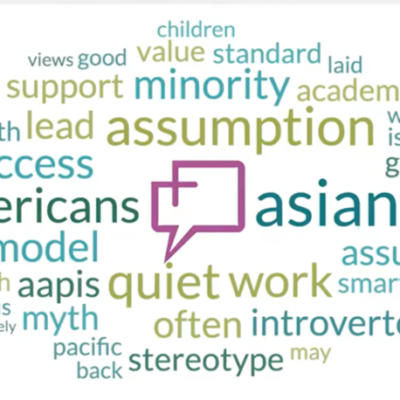By Rhea Settles, Ed.D, M.NCRP
“Thank you for talking with us yesterday during The Kaplan meeting. I really appreciated your mediation, your clarity of thought, and your addressing some of the deeper issues that sprang up. Thank you, too, for supporting my work with the students. That meant the world to me. Since my first day here, your spirit, your professional manner, and your wisdom have helped guide my work in the classroom!” Ms. Gilroy* [1st year teacher]
The above notation was given to me by a first-year teacher when I was a high school vice principal. I believe it speaks for itself whereas the new teacher felt supported and the resources she needed to succeed and feel safe were provided. The other education leaders at the school consisted of three men and one other woman. The men did not believe in human-centered leadership and the woman did not have the courage to. That did not discourage me from being human-centered in my leadership, and where she was willing, I helped the other woman leader. Human-centered leadership is when the leader:
1) creates the conditions for all to be safe and successful;
2) considers accessibility needs and meets them for all;
3) engagements are grounded in civility;
4) is a good steward of discretionary power; and
5) is aware of and considers how people experience them (Ryu J.,Walls, J. & Seashore Louis, K, 2022).
At the beginning of the same school year the new teacher’s note was written, over the walkie talkie I heard the registration staff frantically calling for me to come to the registration station. When I arrived, there was a mother with her 10th grade son. The issue was that the student had $200 worth of lost books [Of course, these days with the protections of the Williams Act, this would be prohibited], therefore, the registration staff was not issuing his class schedule. The mother was frustrated but adamant, she would talk with me but not the principal or any of the other school site leaders [they all had engaged with her in a rule-based way]. I listened, then I signed authorizing the registration staff to give the student his class schedule and worked out a plan with the mother regarding the $200. The mother was so pleased, she said, going forward she would only deal with me. The registration staff were grateful that I was willing to take responsibility for the $200 lost book bill and not put that responsibility on them.
Many women talk often about aspirations to have the education leader title: principal, director, superintendent but forget that with the title, human-centered leadership is necessary. I know about three women education leaders who wanted badly the title of superintendent and once they got it, did not last a full school year. Within five months, they were placed on administrative leave with complaints from employees about heavy-handedness and abuse of power. Subsequently, their contracts were terminated and not renewed. Sadly, their preparation and mindset did not give them the knowledge and tools they needed to lead using human-centered leadership principles.
I have had candid conversations with women education leaders who feel like to advance in their careers, they needed to have a specific title and the only way to sustain it was through a rule-based leadership style. Without fully understanding the privilege, magnitude, and responsibility that the holder of the education leader title entailed, they pursue the title. They do not realize that they will have discretionary power over access, opportunity, and resources that impact others. The currency of relationships which means one has influence and the ability to determine who has value or not. All of this requires a commitment to a mindset that every decision must be centered around how it will benefit and improve the human condition.
When I started my administrative credential program, I was eager to learn how to be a good steward of the power I would receive with the education leader title. I wanted to do this as a woman leader because I found that most men leaders were traditional rule-based leaders and women were either imitators of the men’s leadership style or lacked the courage and knowledge to be human-centered leaders. Also, because I belonged to the woman’s affinity group, I believed that I could influence their leadership styles and in turn they would influence others.
As I studied, I discovered a gap in education leader preparation, that coaching and teaching how to use human-centered leadership was not a priority in most preparation programs. This was apparent in my last course before receiving my administrative credential. The instructor, a former school principal and later a school board member, a man, brought an education leader he respected to speak to the cohort. He shared that a woman guest speaker, an education leader with several years of experience would present at the next class.
I was looking forward to the guest speaker because I thought that since she was a comprehensive high school principal, a woman, in a school district with six large high schools, she would give us a set of human-centered leadership tools. I was shocked when her entire talk was rule-based, focused on “managing teachers,” “reprimanding them,” and “getting rid of them.” I soon realized that this was this woman’s leadership preparation and mentoring. She had been celebrated and groomed to use her title and the privilege that came with it, in this way. She was proud of the sample letter of reprimand she shared and list of what she called “gotcha” phrases to use at the start of the letter (Blase and Blase, 2002).
In education culture, titles matter. Certificated or classified, staff, faculty, or administrator. No matter which school district, county office of education, or SELPA, we know that if a person has an administrator title, then decisions and outcomes are based upon what they think and believe, and most likely influenced by their biases. Over the years, women have taken on these titles, even with the California Professional Standards for Education Leaders (CPSEL) now in place, there are still reports that women education leaders can be rule-based and not human-centered in their leadership style and decision-making.
I told myself that no matter the title as an education leader, I would be courageous and responsible with the privileges that came with the title, and I would use human-centered leadership in all aspects of the work. Below is a human-centered leadership guiding tool that is user-friendly and can be incorporated into an education leader’s work:
1. Creates Conditions
- Creating conditions for all to be successful and safe is a responsibility for those with the education leader title. Because the person with the title has access and control over decisions, resources, and support, the heavy lifting to make sure all are successful and safe lies with the education leader.
- For example, a teacher calls and says she has an emergency and would get to the school site within an hour. She explains that she requested a substitute, but none were available. A human-centered leader would go in and teach the class until the teacher arrives rather than calling other teachers to substitute or reprimanding the teacher for being late.
- Essential question: How am I creating conditions for all stakeholders to be successful and safe?
2. Accessibility Needs
- One of the main issues in our education system is accessibility, not just for students, but for employees and parents. All of us have accessibility needs. This means what resources, supports, and/or tools do we need to access the benefit, environment, knowledge, and/or opportunity.
- For example, before any staff meeting or parent meeting, offer a way for participants to share with you (or a designee) what they need to access the meeting content. If there is food provided, make sure that everyone’s dietary needs are satisfied.
- Essential question: How are the accessibility needs of all individuals being met?
3. Grounded in Civility
- Civility is being mindful of what is done, said, written, and decisions made to cause no harm (Settles, 2003). For people to learn and practice civility, they must be taught civil engagement and human dignity, and this must be a core value within the culture.
- For example, teach people civil engagement and human dignity. I provide Mindful Civility® to the Lancaster School District in Lancaster, California. Mindful Civility is a self-regulation tool that is used to share spaces and resources, and to engage without causing harm or being harmed.
- Essential question: How do I practice civil engagement and human dignity?
4. Discretionary Power
- Discretionary power means you have an advantage to make decisions that impact others, and you can make them without any checks and balances, or accountability for you.
- For example, you need a new 5th grade teacher for the next school year. You really want to place in that position a 2nd grade teacher, who has had great success with the 2nd graders. You believe that the teacher can do for 5th grade what has been done for 2nd grade. While your discretionary power says that you can make the change, human-centered leadership tells you to talk with the 2nd grade teacher about their thoughts.
- Essential question: How am I being a good steward of my discretionary power?
5. Experiencing You
- When we have a title and privileges that will impact others, we must always consider how others are experiencing us. Learning what people are feeling about what we do and say will help us be more inclusive and mindful about our walk with others.
- During the session Mindful Civility for School Leaders in Lancaster, one school principal said she so appreciated the “how do people experience you” element. She said as a school leader it is so easy not to pay attention to how our words or energy has made people feel less valued. And, because we have the most power, we have to do a better job of introspecting and self-checking.
- Essential question: How are people experiencing me?
As women education leaders, we all know the propaganda of rules. Rules are oftentimes in place to subjugate and subordinate the vulnerable people or the very people it is marketed as helping. We know how rules have adversely impacted us. Over the years, I have held both site and central office leadership positions in public school districts, and now as a clinical faculty at a California State University, School of Education: Department of Educational Leadership, and civil engagement and human dignity specialists at The Civility Zone, teaching and coaching how to use Mindful Civility®, I make human-centered leadership a significant part of this work. I am particularly interested in the women affinity group modeling for woman education leaders that once you receive the education leader title, there is a responsibility to do good with it. I encourage a commitment, courageously and responsibly to choosing human-centered leadership every time. Why? “Because I can” in my Tabitha Brown voice and have the discretionary power to do so. Human-centered leadership creates a joyous space for all, and it fulfills the purpose of why we engage with education space in the first place.
References
Blase, & Blase, J. (2002). The Dark Side of Leadership: Teacher Perspectives of Principal Mistreatment. Educational Administration Quarterly, 38(5), 671–727. https://doi.org/10.1177/0013161X02239643
Ryu, J., Walls, J. and Seashore Louis, K. (2022), “Caring school leadership, school context and organizational learning: implications for developing professional capital”, Journal of Professional Capital and Community, Vol. 7 No. 3, pp. 209-227. https://doi-org.proxylib.csueastbay.edu/10.1108/JPCC-07-2021-0039









Leave a Comment